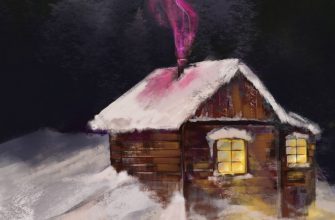Amur tiger
Amur tiger — national property of Russia
Amur tiger is the largest tiger in the world. And it is the only tiger that mastered a life in snow. No other country in the world has such treasure. Without exaggeration, this is one of the most perfect predators among all others. In contrast even to lions that form prides (families) and live at the expense of collective hunting, the tiger is a pronounced loner. Therefore to hunt its prey it needs the highest skills.
The tiger crowns the top of the food pyramid of a unique ecological system — the Ussuri taiga. Therefore, the state of tiger population is an indicator of the state of the entire Far Eastern nature.
The project to preserve Amur tigers was one of the first serious steps of WWF in Russia. Accounting data for 2004/2005 shows that by joint efforts of state and public environmental organizations, tiger numbers stabilized at a level of more than 450 individuals.
In addition, according to tiger census of 2015, at least 540 Amur tigers live in the Russian Far East.
Back in 1994, it seemed impossible: to defeat tiger poaching, to cut off smuggling channels to China, to mobilize science, to create 10 new protected areas, bringing the total preserved area to 23% of the tiger range in Russia, to preserve habitats in cedar zones, to work out a technique for resolving conflict situations between a man and a tiger… Together with our partners we did it!
But very soon it turned out that what was done was an easy in comparison to what was coming. After all, we began to work in conditions when even only a few hunters could boast of having seen a living master of taiga. Today we are working in conditions when even for the townspeople who went to barbecue, meeting a tiger is no longer a rarity.
The power human’s love for the tiger is directly proportional to the distance to the object of love. The easiest way to love our tiger is by living in the Netherlands or in Germany. It’s pretty comfortable to love a tiger living in Moscow or St. Petersburg. It’s not so difficult to love a tiger, while living in the center of Vladivostok and see it only on the coat of arms of the city. And it’s quite another thing to love a tiger whose footprints you meet every day on your way. And not only footprints…
The attitude of local population towards the master of taiga has changed dramatically not for the better. These are the realities of today. «Too many tigers have appeared!» — grumbling today, those who yesterday was fully for the preservation of this species. We have no right neither to close our eyes nor blame these people. And persuasions that the tiger is actually soft, white and fluffy will not help there.
What should be done?
Provide with housing
Today, the housing issue for tigers is a matter of highest priority. The most elite housing is, of course, the territory of nature reserves and national parks, occupying less than 12% of tigers’ range. For such apartments, the struggle is not for life, but for death. Tigress Troy, who lost her mother and was rehabilitated in the center of «Utes», and then released to freedom, has tried to settle in the Reserve for half a year. But nevertheless she was squeezed out from there by adult relatives to an unguarded territory. The situation with budgetary housing is not better either. studies of our underlying partner WCS (radio tracking project) have shown that young tigers are forced run about without habitat, stumbling everywhere on lands already occupied by adults. Of the four young, only one could find hunting ground. The rest were lost. Today, in an attempt to find new residential areas tigers moved to the left bank of the Amur, regularly appearing in the Amur region, wandering along the Mainline.
If we want to preserve tigers, we must leave for tem at least the currently untouched by us parts of the Far East taiga. Meanwhile, illegal logging continues to be a highlight of Primorsky Krai. It is our fundamental task to help state structures to end this.
Each of the 500 tigers needs to catch and eat about 50 adult ungulates per year. And if it is impossible to get such quantity of meat on his hunting ground, we get a guaranteed dog hunting criminal. Reserves have no right to intervene in natural processes and increase the number of ungulates. But the owners of hunting grounds both have the right and are interested in this, but simply do not know what exactly needs to be done.
WWF supports hunters willing to spend effort and means to increase their hunting resources by orders of magnitude and are ready to share this resource with the tiger. Having rolled up our sleeves, together we try to find optimal types and methods of feeding, methods of vaccination, which prevents mass diseases of ungulates, and other opportunities to increase the number of roe deer, wild boars and deer in hunting grounds.
Today, the area of such model, friendly to tigers, hunting grounds has already exceeded 2 million hectares of tigers’ habitat, but at least 5 times more is needed.
Eliminate conflicts
In recent years, as soon as winter came, the specialists simply could not physically be at the same time at all points where conflicts between human and tiger has erupted. And there, where they could not make it, the conflict somehow resolved itself. have disappeared somewhere. Without a trace. It is not necessary to be Sherlock Holmes to guess: the locals, without waiting for the authorities, got weapons and arranged lynch mobs over the tiger.
If we want to preserve tigers, the state must take full responsibility for the safety of citizens living alongside tigers. This means that a structure must be created that can quickly succeed in EVERY conflict and resolve this conflict with the utmost speed maximum possible professionalism. Unfortunately, public organizations cannot do this. But we are ready and able to support the development, training and equipping of such a structure.
Презентация об Амурских тиграх на английском языке
специалист в области арт-терапии
Описание презентации по отдельным слайдам:
PRESENTATION Siberian ( Amur) tigers Polinа Korchinskаyа
Fast facts Status: Endangered Type: Mammal Diet: Carnivore Size: 10.75 ft (3.3 m) Weight: 660 lbs (300 kg)
Place of residence Siberian (or Amur) tigers live primarily in eastern Russia’s birch forests, though some exist in China and North Korea. There are an estimated 400 to 500 Siberian tigers living in the wild, and recent studies suggest that these numbers are stable
Population and Conservation Poaching is a reduced—but still very significant—threat to Siberian tigers. All five remaining tiger subspecies are endangered, and many protection programs are in place. There were once eight tiger subspecies, but three became extinct during the 20th century. Tigers are the largest of all wild cats and are renowned for their power and strength.
Population and Conservation Over the last hundred years, hunting and forest destruction have reduced overall tiger populations from hundreds of thousands to perhaps 3,000 to 5,000. Tigers are hunted as trophies and also for body parts that are used in traditional Chinese medicine.
Behavior Tigers live alone and aggressively scent-mark large territories to keep their rivals away. They are powerful hunters that travel many miles to find prey, such as elk and wild boar, on nocturnal hunts. Tigers use their distinctive coats as camouflage (no two have exactly the same stripes) and hunt by stealth.
Behavior A hungry tiger can eat as much as 60 pounds (27 kilograms) in one night, though they usually eat less.
Behavior Despite their fearsome reputation, most tigers avoid humans. These animals are often sick and unable to hunt normally, or live in areas where their traditional prey has vanished.
Behavior Females give birth to litters of two to six cubs, which they raise with little or no help from the male. Cubs cannot hunt until they are 18 months old, and remain with their mothers for two to three years, when they disperse to find their own territory.
Thank you for your attention
Номер материала: ДБ-272378
Не нашли то что искали?
Вам будут интересны эти курсы:
Оставьте свой комментарий
Рособрнадзор: почти половина учителей не дотягивает до базового уровня подготовки
Время чтения: 2 минуты
16 российских вузов впервые попали в международный рейтинг QS
Время чтения: 2 минуты
Каждый третий школьник отстает в учебе
Время чтения: 3 минуты
11 июня выпускники сдают ЕГЭ по истории и физике
Время чтения: 2 минуты
Для школ с модульным графиком каникулы в новом учебном году сократят на неделю
Время чтения: 2 минуты
Итальянский учитель дал детям задание на лето и прославился
Время чтения: 4 минуты
Подарочные сертификаты
Ответственность за разрешение любых спорных моментов, касающихся самих материалов и их содержания, берут на себя пользователи, разместившие материал на сайте. Однако администрация сайта готова оказать всяческую поддержку в решении любых вопросов, связанных с работой и содержанием сайта. Если Вы заметили, что на данном сайте незаконно используются материалы, сообщите об этом администрации сайта через форму обратной связи.
Все материалы, размещенные на сайте, созданы авторами сайта либо размещены пользователями сайта и представлены на сайте исключительно для ознакомления. Авторские права на материалы принадлежат их законным авторам. Частичное или полное копирование материалов сайта без письменного разрешения администрации сайта запрещено! Мнение администрации может не совпадать с точкой зрения авторов.
Презентация по английскому языку «Амурский тигр» (6 класс)
специалист в области арт-терапии
Описание презентации по отдельным слайдам:
2017 – ecology year AMUR TIGER
A tiger is a great wild animal of tremendous beauty, grace and strength. A tiger is one of the largest cats on the Erath but the number of these charming animals is decreasing due to the human hunt and industrial activity.
Where do Amur tigers live? 95% of Amur tigers live in the Far East of Russia. You can see this beautiful animal in the mountains.
Why is an Amur tiger unique? AMUR TIGER SOME INTERESTING FACTS A tiger can live 15-20 years. A tiger sleeps 12 hours a day. A tiger has 28 teeth. A tiger can eat bears, frogs, fish. Tiger’s wool is 10 cm long. Tiger’s body is 2,2 m long. Tiger’s weight is 165-180 kg.
A tiger’s body is powerful and covered with thick fur of black and orange stripes. The location of stripes is unique for every tiger. Tigers have strong graceful legs and large paws and a beautiful long tail.
TIGER’S MONUMENT IN VLADIVOSTOK
RED BOOK OF RUSSIA This animal disappeared for a long time. But people try to save these wonderful wild cats for the next generation.
Tiger’s Day in Vladivostok
What do you know about the Amur tiger? 1/ Where does the Amur tiger live? 2/ How long can this animal live? 3/ How long can this cat sleep? 4/ What does the tiger eat? 5/ Why do people in Vladivostok celebrate the Tiger’s Day?
Do you like this photo? Give a short comment.
Thank you for your attention!
Номер материала: ДБ-893248
Не нашли то что искали?
Вам будут интересны эти курсы:
Оставьте свой комментарий
В школах Подмосковья появятся предпринимательские классы
Время чтения: 1 минута
МГУ вновь занял первое место в рейтинге лучших вузов России
Время чтения: 1 минута
16 российских вузов впервые попали в международный рейтинг QS
Время чтения: 2 минуты
В Волгоградской области оснащают лаборатории первого школьного технопарка «Кванториум»
Время чтения: 1 минута
Рособрнадзор: почти половина учителей не дотягивает до базового уровня подготовки
Время чтения: 2 минуты
Итальянский учитель дал детям задание на лето и прославился
Время чтения: 4 минуты
Подарочные сертификаты
Ответственность за разрешение любых спорных моментов, касающихся самих материалов и их содержания, берут на себя пользователи, разместившие материал на сайте. Однако администрация сайта готова оказать всяческую поддержку в решении любых вопросов, связанных с работой и содержанием сайта. Если Вы заметили, что на данном сайте незаконно используются материалы, сообщите об этом администрации сайта через форму обратной связи.
Все материалы, размещенные на сайте, созданы авторами сайта либо размещены пользователями сайта и представлены на сайте исключительно для ознакомления. Авторские права на материалы принадлежат их законным авторам. Частичное или полное копирование материалов сайта без письменного разрешения администрации сайта запрещено! Мнение администрации может не совпадать с точкой зрения авторов.





















